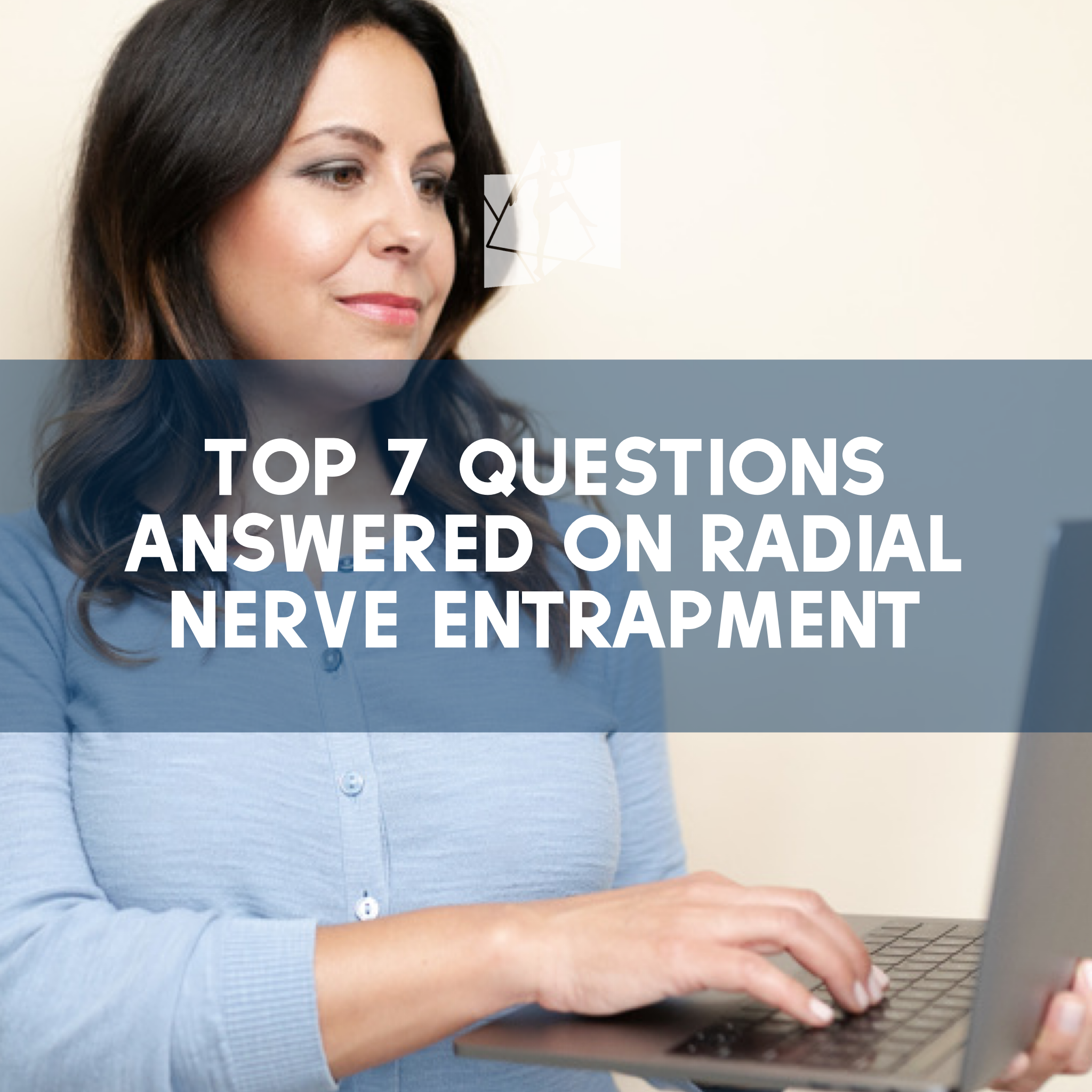To wrap up our section on radial nerve entrapment, I had a chance to (virtually) interview Betsy about how to manage this from the patient perspective. Betsy’s years as nationally ranked DI swimmer have helped her to hone her practice with upper extremity injuries. She’s been on both sides of the recovery process, and shares her insight below.
SV: For the past month, we’ve been sharing the latest research on radial nerve entrapment. As a recap, what are your top three take aways for anyone who's been experiencing elbow pain for a while?
BW: If you’ve been experiencing elbow pain for a while, the #1 focus needs to be on identifying aggravating factors for that elbow pain. Once you can identify what aggravates your pain, #2 focus should be on trying to avoid or limit the aggravating factors and give your elbow rest and time to heal. That allows for #3 - decreasing inflammation. It will be important to try to decrease any inflammation in the area, which is being caused by those aggravating activities, in order to decrease compression and irritation around the nerve and to allow healing to occur.
SV: Can you share more about the role of compression straps and braces during recovery, and how nerve injuries differ?
BW: Contrary to tennis elbow or lateral epicondylitis, which can present similarly with lateral elbow pain, nerve injuries generally do not respond well to compression straps as a recovery aid. The goal of rehabbing a nerve entrapment is to decrease compression on the nerve, so adding a compressive strap may irritate more vs help. With tennis elbow it is helpful to reduce pain because it will disperse the strain through the muscle and tendon that it irritated, but unfortunately for a true nerve entrapment that won’t be helpful. Bracing/splinting may be helpful for more extreme cases to minimize aggravating movements if you’re having a hard time avoiding them yourself.
SV: What are the chances that someone would make this worse by "pushing through it”?
BW: “Pushing through” pain with radial nerve entrapment is generally speaking not a good idea as it can definitely exacerbate the problem. Given radial nerve entrapment is often an overuse injury to begin with, continued use of the extensors and supinators can make symptoms worse. The longer a nerve is compressed the more vulnerable it is to long term damage. So, in this case we really try to decrease inflammation and reduce symptoms as quickly as possible. Therefore, it will be important to listen to your symptoms vs “pushing through” them!
SV: The last three posts have focused on this a more of an overuse injury. Have you seen an acute, or traumatic radial nerve injury?
BW: Although radial nerve entrapment is often due to overuse, it’s definitely possible to develop after more of a traumatic injury. For example, one previous patient I have worked with came to physical therapy after a humeral shaft fracture (broken bone in the arm). As the bone was healing he began to feel symptoms similar to radial nerve entrapment with some numbness/tingling down the arm in the distribution of the radial nerve. As therapy progressed but these symptoms remained, we ended up referring him back to the surgeon for further imaging. During his healing process, he had developed a bone callus that was compressing on the radial nerve and needed to be removed. Once the callus was removed and we resumed PT, we were able to get the patient back to 100% sensation and function!
SV: With overuse injuries, things get a little fuzzy. Can you talk through a return to sport timeline for radial nerve entrapment?
BW: Return to sport timelines can vary depending on the severity and duration of the symptoms. On average, conservative management can usually resolve symptoms within about 4-6 weeks. The initial goal will be to decrease severity and irritability of symptoms. Once symptoms are stable, we will work on progression to regain range of motion, strength and specific sport related demands without increasing symptoms.
SV: At Physical TheraPT, as many of our patients know, we love staying current on the latest innovations in exercise and rehab equipment. What’s your favorite product out there right now for elbow rehab?
BW: I really like using the Theraband Flexbar for elbow rehab. It’s a great product to use for strength, stretching and soft tissue mobilizations.
SV: Last question- what’s your go-to strategy for pain relief with this type of injury?
BW: With this type of injury my go-to strategy is avoiding aggravating activities. Decreasing the irritation and inflammation will be key - this may require assistance from topical or oral NSAIDs as well.






